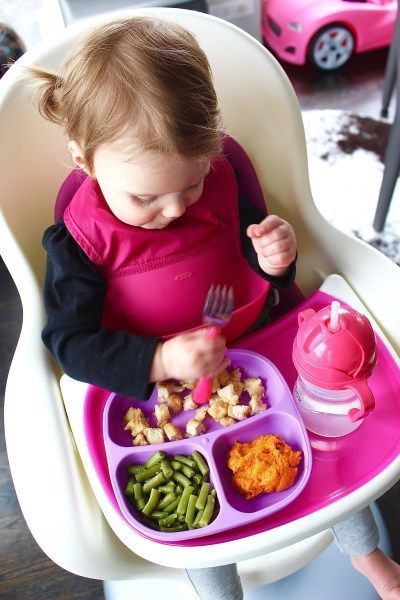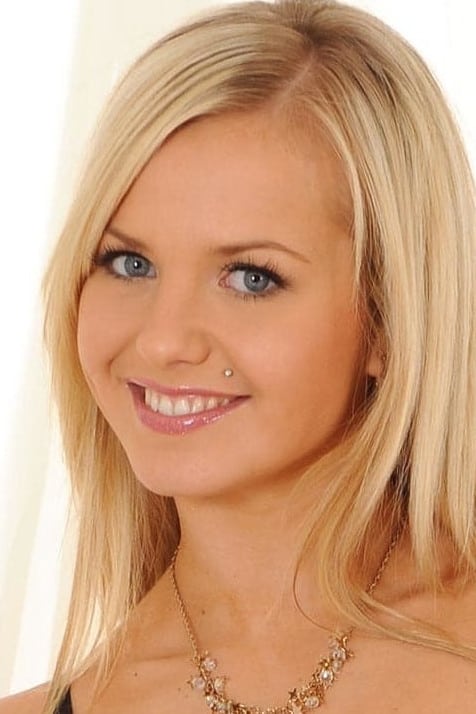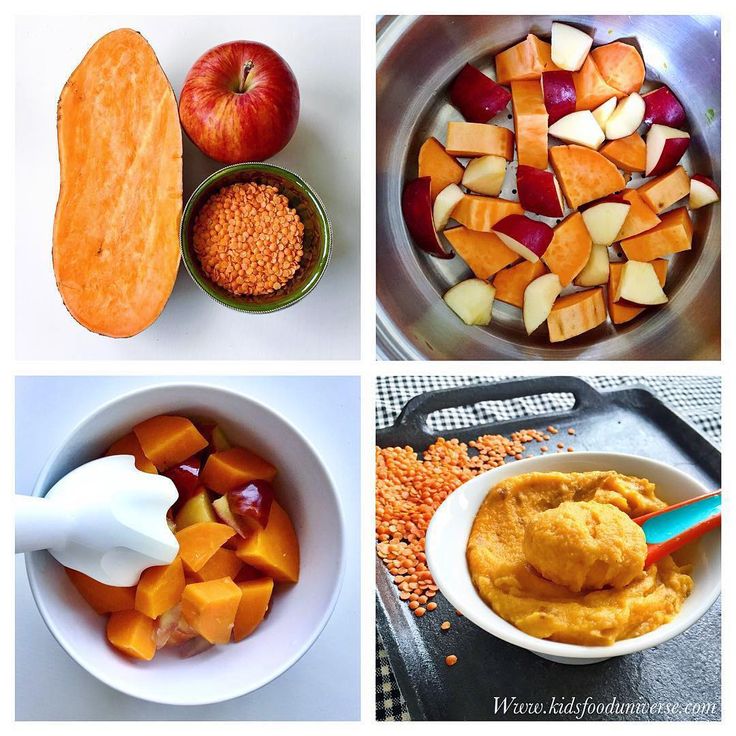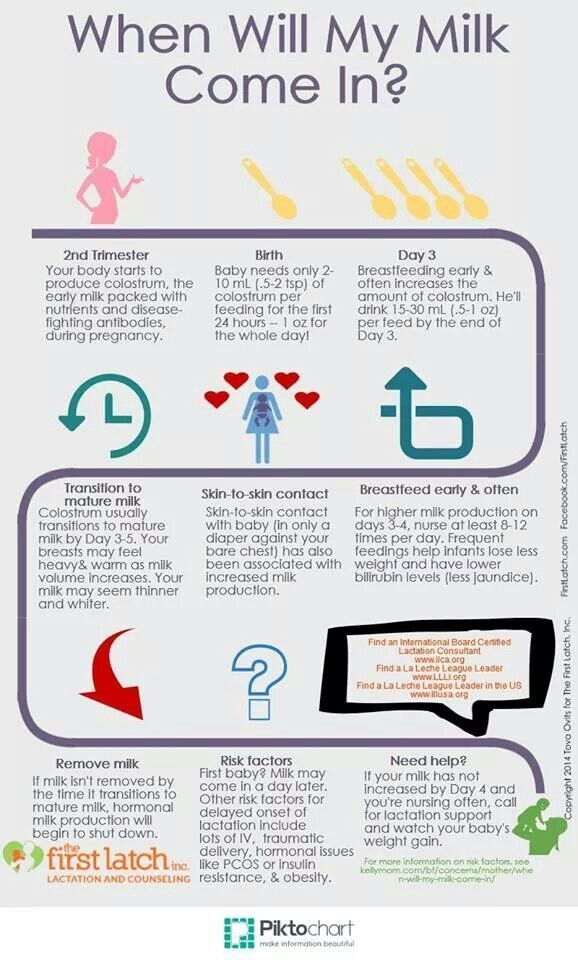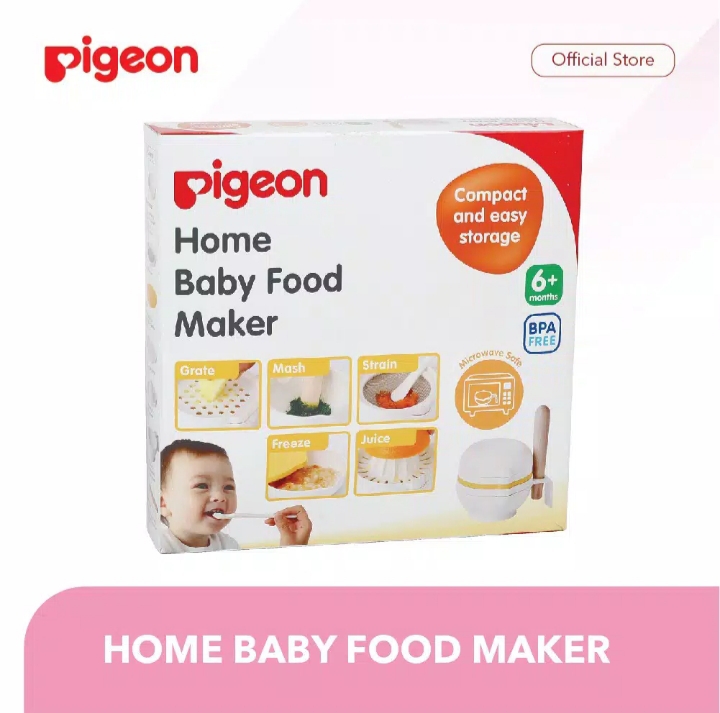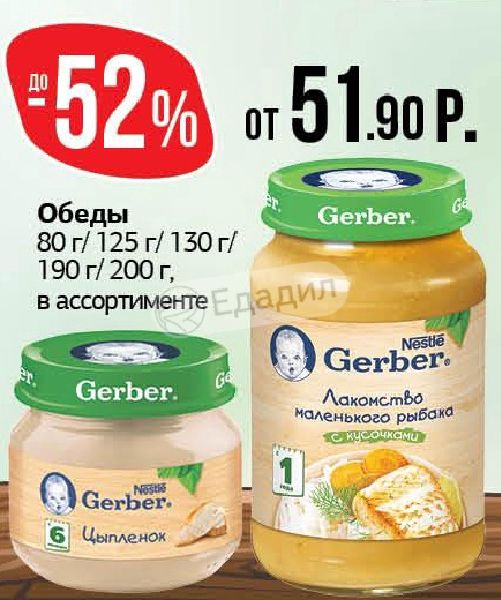Ketogenic diet baby food
The Ketogenic Diet in a Bottle?
Most parents and neurologists consider the ketogenic diet as only including heavy whipping cream, mayonnaise, butter, and oils. For most children receiving this therapy, they are correct. In order to create a solid food diet in which 90% of the calories are fat, these foods make up a large portion of the child’s usual intake. However, the ketogenic diet can alternatively be easily provided as a liquid-only formulation to both infants as well as children with gastrostomy tubes. To some parents this is a surprise, but many ketogenic diet experts have been utilizing these formulas for years with good results.
What are these formulas?
There are several ways to provide the ketogenic diet as a formula. Perhaps the most simple is to use Nutricia KetoCal™, which is available in a powdered mix and either a 3:1 or 4:1 ratio. Water is added and calories are calculated by a dietitian. The 4:1 KetoCal has a slight vanilla flavor; the 3:1 KetoCal is unflavored. These formulas are milk-based, include corn syrup solids, and are nutritionally complete.
For children in whom separate components (e.g. fat, carbohydrate, and protein) are desired, or who have a lactose intolerance, “modular” ketogenic diets can be created using Ross Carbohydrate Free™ (Abbott Nutrition), Microlipid™ (Nestle Nutrition), and Polycose™ (Abbott Nutrition). A product in South Korea is also in clinical use called Ketonia™ has also been studied and is in active use, specifically for infantile spasms. A revised formulation called Ketonia II™ is now available without MCT (medium chain triglyceride) oil included. Lastly, Accera Pharmaceuticals, Inc. has developed a powdered MCT (medium chain triglyceride) oil-based powder (40 grams) that is designed to provide oral ketones to adults with Alzheimer’s disease. It is clinically available, includes both milk and soy protein, and is called Axona™.
How well do they work?
Interestingly, not only do the ketogenic diet formulas help in children with epilepsy on the ketogenic diet, but two limited studies suggest they work better than a solid food ketogenic diet. The first study, by our team at Johns Hopkins, was published in Epilepsia in 2004 and described 61 children who were on all-liquid ketogenic diets (27% of all children started on the ketogenic diet at Johns Hopkins over a 6-year period). Surprisingly, 59% of these children had a >90% reduction in seizures, which is nearly twice the average response for children receiving the ketogenic diet overall. One year later, Dr. Hosain and his colleagues at Cornell University Medical Center in New York published similar results in Pediatric Neurology. Six (50%) of 12 children had >90% reduction in seizures after 12 months of receiving a formula-only ketogenic diet.
The first study, by our team at Johns Hopkins, was published in Epilepsia in 2004 and described 61 children who were on all-liquid ketogenic diets (27% of all children started on the ketogenic diet at Johns Hopkins over a 6-year period). Surprisingly, 59% of these children had a >90% reduction in seizures, which is nearly twice the average response for children receiving the ketogenic diet overall. One year later, Dr. Hosain and his colleagues at Cornell University Medical Center in New York published similar results in Pediatric Neurology. Six (50%) of 12 children had >90% reduction in seizures after 12 months of receiving a formula-only ketogenic diet.
Why do children receiving an all-liquid ketogenic diet do so well? The answer is not clear. Part of the success may be due to the perfect compliance, with ketosis assured and cheating nearly impossible. However, the reason for the doubling of seizure control is likely clearly more complicated than that, and may have to do with fatty acid composition of these formulas or other factors.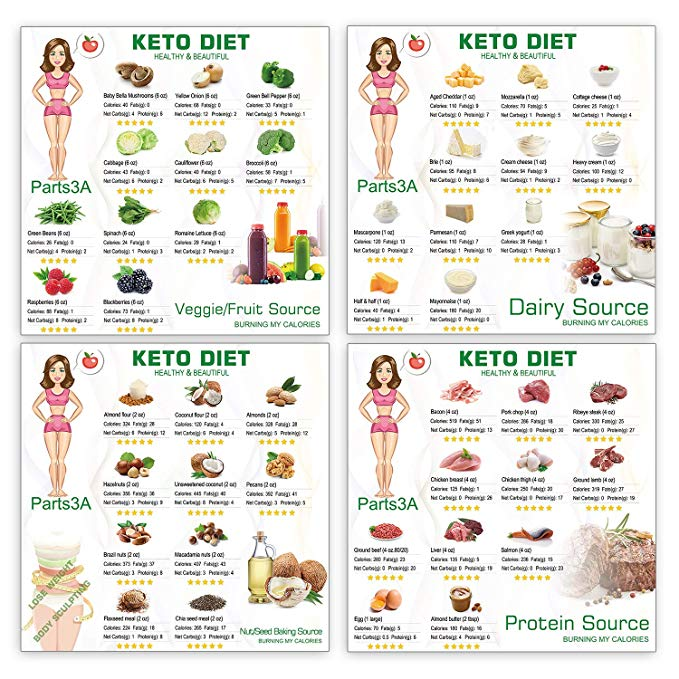
Are there other advantages?
Other than benefits for seizure control and compliance, there are some other potential advantages to liquid ketogenic diets. KetoCal™ is nutritionally complete, so there is no need for additional multivitamin and calcium supplementation. It also includes selenium, carnitine, and zinc, often supplemented additionally on solid food ketogenic diets. We have also heard anecdotally of less constipation with the liquid formulas. Lastly, children receiving all-liquid ketogenic diets appear to be significantly less likely to have elevated total cholesterol. In one study, there was one-third the risk of total cholesterol above 200 mg/dL if the child was receiving only ketogenic diet formula. Only 17% of children taking only ketogenic formulas had elevated total cholesterol during their time on the ketogenic diet. Why would this be the case? When you compare the cholesterol values of formula and a typical solid-food ketogenic diet, it becomes very clear:
Average cholesterol and fat content in one day using three different ketogenic diets (4:1 ratio and 1000 calories).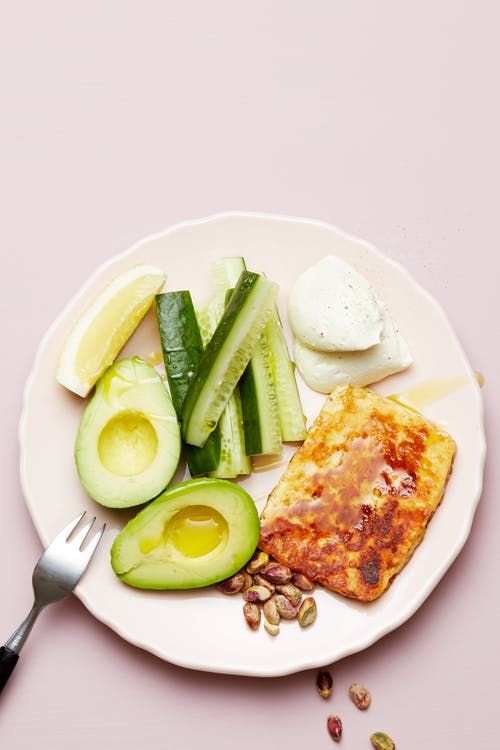 Reproduced from Nizamuddin, et al. 2008.
Reproduced from Nizamuddin, et al. 2008.
| Solid food diet* | Modular formula** | Nutricia KetoCal™ | |
| Cholesterol (milligrams) | 454 | 0*** | 0*** |
| Total Fat (grams) | 104 | 100 | 100 |
| Saturated Fat (grams) | 63 | 20 | 23 |
| Saturated Fat as Percent of Total Daily fat | 60% | 20% | 23% |
*This represents using three distinct meals to create a 1000 calorie diet, including chicken, salmon, eggs, oil, heavy whipping cream, and vegetables.
** Microlipid™(Nestle Nutrition), Ross Carbohydrate Free™ (Abbott Nutrition), and Polycose™ (Abbott Nutrition) in combination to create a 4:1 ratio.
***0.01 mg of cholesterol for both products.
The future of ketogenic formulas
Although predominantly used in 2009 for infants and children with gastrostomy tubes with intractable epilepsy receiving the ketogenic diet, these formulas may have other uses in the future. There is an ongoing study at our institution to see if the modified Atkins diet with supplemental KetoCal™ shakes (10 ounces daily) for the first month is more likely to result in seizure control than the modified Atkins diet alone. In this study, the ketogenic formula is used in addition to solid foods, rather than as the entire diet. Ketogenic shakes (e.g. Axona™ and KetoCal™) are being used clinically and in research for non-epilepsy indications such as Alzheimer’s disease and ALS (Lou Gehrig’s Disease) respectively. Information about non-epilepsy indications for the ketogenic diet was discussed in the August 2008 edition of KetoNews.
There is an ongoing study at our institution to see if the modified Atkins diet with supplemental KetoCal™ shakes (10 ounces daily) for the first month is more likely to result in seizure control than the modified Atkins diet alone. In this study, the ketogenic formula is used in addition to solid foods, rather than as the entire diet. Ketogenic shakes (e.g. Axona™ and KetoCal™) are being used clinically and in research for non-epilepsy indications such as Alzheimer’s disease and ALS (Lou Gehrig’s Disease) respectively. Information about non-epilepsy indications for the ketogenic diet was discussed in the August 2008 edition of KetoNews.
One of our modified Atkins diet study patients and her daily KetoCal™ shakes.
Nutricia is also investigating new ways in which to make KetoCal™ more accessible for children receiving it. One option may be ready-made liquids that children can bring to school such as in cardboard juice-pack styles. These will be available for sale in November 2009 according to the company. Another method to provide the benefits of KetoCal™ might be to use the powder as a flour substitute in recipes. Some of these already exist and are in clinical use, such as at www.myketocal.com.
Another method to provide the benefits of KetoCal™ might be to use the powder as a flour substitute in recipes. Some of these already exist and are in clinical use, such as at www.myketocal.com.
References
- Hosain SA, La Vega-Talbott M, Solomon GE. Ketogenic diet in pediatric epilepsy patients with gastrostomy feeding. Pediatr Neurol. 2005;32(2):81-3.
- Kossoff EH, McGrogan JR, Freeman JM. Benefits of an all-liquid ketogenic diet. Epilepsia. 2004;45(9):1163.
- Nizamuddin J, Turner Z, Rubenstein JE, Pyzik PL, Kossoff EH. Management and risk factors for dyslipidemia with the ketogenic diet. J Child Neurol. 2008;23(7):758-61.
Ketogenic Diet: Treating Children’s Seizures with Food
No one knows why the ketogenic diet―which was developed in the 1920's―works so well for seizure control, but it does. And these days, it's widely considered one of the hottest food fads in America.
What is the ketogenic diet?
The ketogenic diet (also known as the "keto diet") is a high fat, low carbohydrate, and "just enough" protein for growth and maintenance diet. Typically, it follows a ratio of 3-4 grams of fat for every 1 gram of carbohydrate and protein. This means that about 90% of the calories come from fat, requiring those on the diet to eat mostly fatty foods such as butter and cream. Although it may sound terrible, there are many creative recipes that make this a tasty approach. What distinguishes the traditional ketogenic diet from the modified-Atkins diet is the rigorous attention to food intake and limitation on total calories.
Typically, it follows a ratio of 3-4 grams of fat for every 1 gram of carbohydrate and protein. This means that about 90% of the calories come from fat, requiring those on the diet to eat mostly fatty foods such as butter and cream. Although it may sound terrible, there are many creative recipes that make this a tasty approach. What distinguishes the traditional ketogenic diet from the modified-Atkins diet is the rigorous attention to food intake and limitation on total calories.
When should a ketogenic diet be used for seizure control?
Some
children with epilepsy can have disabling seizures―up to hundreds per day―which can severely limit their quality of life and prevent them from participating in school and social activities. Seizure control is the first step in helping kids with epilepsy achieve otherwise normal lives. When
medication isn't working and/or the side effects from it are too much to bear, the ketogenic diet might be offered as a treatment option. In fact, the statistics show that it is often more effective than another, new medication, and frequently also improves alertness and behavior.
In fact, the statistics show that it is often more effective than another, new medication, and frequently also improves alertness and behavior.
According to a 2008 consensus report from an international expert panel, the ketogenic diet "should be offered to a child after two anticonvulsants are used unsuccessfully." The diet must be started and maintained under close medical supervision of an experienced medical team—including a dietitian.
Ketogenic diet looks different for every child and depends on several factors:
The child's age and weight
How the child and family eat (kosher, halal, vegetarian, organic)
The child's diet prescription (the specific combination of fats, protein, and carbohydrates weighed out)
The diet may not work for everyone but is suitable for many different patients.
The ketogenic diet can be effective for all seizure types and epilepsy syndromes. Some of the specific disorders that often respond to the diet include
infantile spasms, myoclonic-astatic epilepsy, Dravet syndrome, Doose syndrome, myoclonic-astatic epilepsy, Rett syndrome, migrational disorders, GLUT-1 deficiency and tuberous sclerosis complex.
Typically, children are started at a Level IV Epilepsy Center and monitored as in-patients by a ketogenic diet team that may include a pediatric neurologist, pediatric epileptologist, nurse practitioner, dietitian, nurse, and social worker.
How well does it work?
Although it does not work for every child, several studies have shown that the ketogenic diet does reduce or prevent seizures in many children whose seizures could not be controlled by medications or those who were unable to tolerate the side effects of their medications.
Over half of children who go on the diet have at least a 50% reduction in the number of their seizures. It can start to help after just one week, but more often it can take a few weeks up to several months to judge whether it will be effective. If the diet successfully controls seizures, it may be continued for several years under the supervision of the child's health care team. Many children on the ketogenic diet continue to take seizure medications but on average they require one less medication and often the dosage of remaining ones is lowered.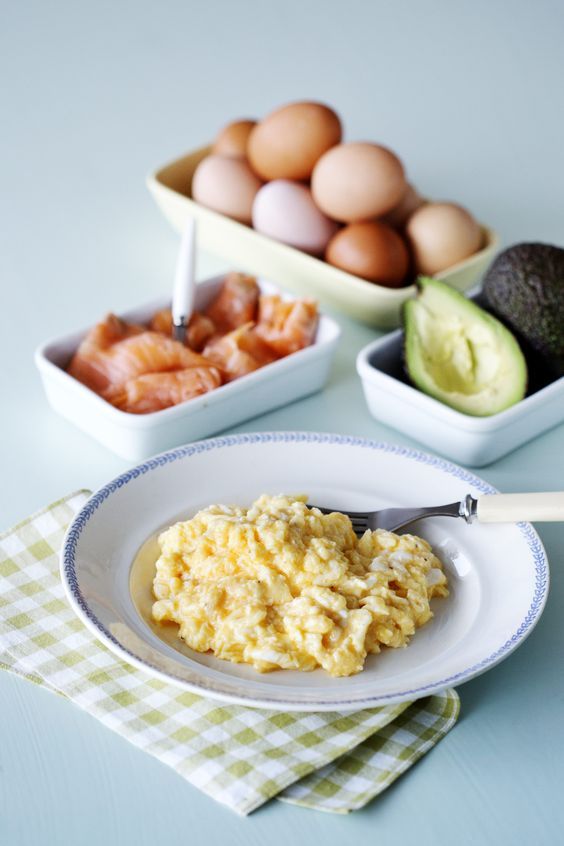
Does the ketogenic diet have any side effects?
The ketogenic diet may cause side effects in some children, including constipation, reflux, weight changes, and kidney stones (due to uric acid build-up in the blood). These problems can be minimized by staying hydrated and careful monitoring. Some families notice mood changes such as hyperactivity or irritability.
Many of the side effects can be reduced by adjustments to the diet or with additional medication.
If you are considering the ketogenic diet, ask your child's doctor to explain all possible side effects, what you should watch for and what action you should take for each one.
Are there other special diets for seizures?
Yes. Other special diets include: modified-Atkins diet, low glycemic index treatment, and MCT ketogenic diet. These may be used instead of the ketogenic diet for some children. If you have questions or would like to explore these options, talk with your child's doctor.
Additional Information:
Seizures and Epilepsy in Children
How to Support a Child with Epilepsy: Information for Parents
The Charlie Foundation for Ketogenic Therapies
The Epilepsy Foundation
The information contained on this Web site should not be used as a substitute for the medical care and advice of your pediatrician.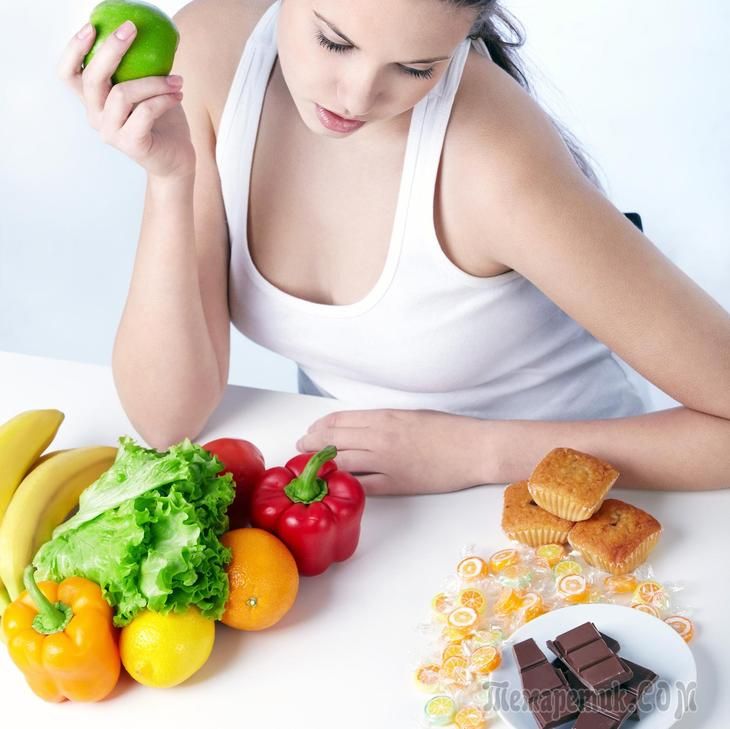 There may be variations in treatment that your pediatrician may recommend based on individual facts and circumstances.
There may be variations in treatment that your pediatrician may recommend based on individual facts and circumstances.
Ketogenic diet for epilepsy in children and adults. Recipes and menus.
The ketogenic diet is a nutritional principle based on a certain ratio of proteins, fats and carbohydrates consumed in food. It appeared in the first half of the twentieth century - doctors noticed that the predominance of fatty foods in the diet can reduce the frequency of seizures in children with epilepsy in almost 90% of cases. At that time, anticonvulsant treatment had not yet been developed, and "fatty" food became one of the effective ways to combat the disease.
A therapeutic diet based on this principle was developed in the 1920s in the USA. It is a special diet for the patient, which is based on fats. Protein in this diet should be consumed in moderation by the patient, and carbohydrate intake should be kept to a minimum.1
use it for your child, whose medications have caused many severe side effects. 2
2
The ketogenic diet originated to relieve the condition of children with epilepsy, and can be used for this purpose by prescription and under the supervision of a physician today. It should only be noted that the diet is used not instead of, but in addition to the chosen therapy, and it should be followed under the supervision of a doctor. Who first noticed the connection between an increase in the amount of fat in food and weight loss is not known for certain, but the ketogenic diet for weight loss began to gain popularity. It should be noted that today it is not recommended to lose weight with the help of fatty foods - the body may be damaged.
Principles of Diet
The essence of the diet is that when digesting food, fats are converted into specific metabolic products - ketone bodies, which, when they get into the brain, provide an anticonvulsant effect. That is why the diet is called ketogenic - it leads to the production of ketones in the body, which, in fact, are a remedy for epilepsy. This diet is not to lose weight, but to fight the disease.
This diet is not to lose weight, but to fight the disease.
The therapeutic diet requires 3 to 4 grams of fat for every gram of protein and carbohydrates. While protein and carbohydrates should be consumed in moderation, it is important to ensure that you get enough protein.3 To find the optimal nutrient ratio for your particular situation, you should consult with your healthcare professional and a registered dietitian. During treatment, the initially selected diet can be adjusted by the doctor in accordance with the patient's condition.
Diet for epilepsy should include various types of fatty foods such as butter, bacon, heavy cream, vegetable oils, mayonnaise. In countries where high-fat diets are widely used in nutrition, the food industry produces many special products to provide a varied menu.1
medicines (eg, cough syrups), vitamins, when using toothpastes containing sugar, and other non-food and food products that may contain sugar.3 Read ingredient descriptions carefully when purchasing hygiene products.
A diet is prescribed, as a rule, for forms of epilepsy that are resistant to the effects of anticonvulsant drugs. Like any other, this diet has its contraindications. These include:
- Functional disorders in the work of the heart, liver, kidneys;
- Presence of current encephalopathies;
- Mitochondrial diseases;
- Endocrine diseases (e.g. diabetes mellitus)
In addition, the need for surgery may be a relative contraindication.4
It must be understood that diet alone does not guarantee improvement. As a rule, during the first two months, the diet goes through a “trial period”: an analysis of the patient’s condition is carried out and a decision is made to stop or continue the diet. If during the trial period the diet has shown its effectiveness, in the absence of negative effects, the doctor, as a rule, recommends continuing it. In children 1-12 years old, the diet in most cases gives good results. Children under 1 year of age are not usually prescribed this diet because there is a risk of hypoglycemia, a severe drop in blood sugar levels.1
Children under 1 year of age are not usually prescribed this diet because there is a risk of hypoglycemia, a severe drop in blood sugar levels.1
Although the diet is most effective in children, the ketogenic diet for epilepsy in adults is also used. In general, its use can reduce the frequency of epileptic seizures, as well as improve memory and attention. In addition, in some patients, this allows you to reduce the doses of antiepileptic drugs taken.5
Epilepsy menu
The ketogenic diet is a remedy, and, like any medicine, it must be used according to certain rules. First of all, these rules relate to the diet and products included in its composition.
Products are selected in such a way that 3-4 parts of fat accounted for 1 part of proteins and carbohydrates. Accordingly, foods rich in proteins and carbohydrates are strictly limited. Cereals, fruits, bread, root vegetables (potatoes, beets, carrots), flour products, pasta are practically excluded from the diet.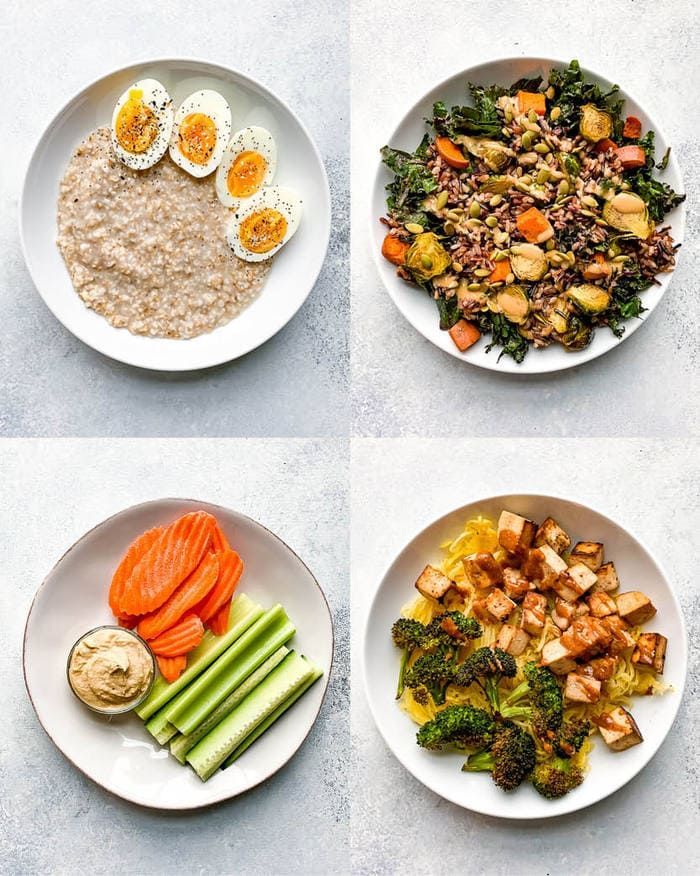 It is also forbidden to drink juices and mineral water - only ordinary, without gas.6
It is also forbidden to drink juices and mineral water - only ordinary, without gas.6
The menu for the week is compiled in such a way that it includes all available products.
As a rule, the diet promotes weight loss, but this is more of a side effect, and if it can even be useful for an adult in some cases, then the child needs to control weight and adjust nutrition.
It is better to start treatment in a hospital, under the supervision of doctors, without trying to make a diet for yourself according to the description in various sources. The first week is quite difficult for patients, at least a day, or even a few will have to starve - drink only water. This is necessary in order to introduce the body into a special state and force it to start producing ketones, which serve as an anticonvulsant.
Doctors in the hospital select products that are suitable for the patient and establish a relationship between their use and the number and severity of attacks. After selecting an individual menu, the patient is allowed to go home. It is necessary to tune in to long-term dietary restrictions, the disease will not recede in one week. The diet will have to be followed for at least two years, after which it can be canceled after consultation with the attending epileptologist.
After selecting an individual menu, the patient is allowed to go home. It is necessary to tune in to long-term dietary restrictions, the disease will not recede in one week. The diet will have to be followed for at least two years, after which it can be canceled after consultation with the attending epileptologist.
Possible side effects
The ketogenic diet for epilepsy in children is considered to be a fairly safe and effective treatment with few side effects. Side effects occur mainly when the patient does not fully follow the prescribed instructions. For example, cases of kidney stone formation, decreased immune function, and lower blood sugar levels have been identified in patients adhering to this diet.7
It is important to understand that the ketogenic diet, like most others, cannot be fully beneficial due to the fact that the body cannot get all the nutrients it needs in sufficient quantities. However, under the supervision of specialists, the patient can qualitatively improve his state of health, the main thing is compliance with all prescribed rules, patience and the desire to achieve results.
Within one week of dietary restrictions, no serious consequences for the body occur, but with a long-term diet, a lack of useful substances begins to be felt.
In order to replenish it, doctors in specific cases advise patients to consume enough foods that contain folic acid (raw or minimally processed vegetables and fruits), calcium and magnesium (dairy products), vitamin B12 (found in the greatest amount in beef liver), vitamin K (cereals and green leafy vegetables), and vitamin D (fish oil and fish). However, these recommendations can only be made on a patient-by-patient basis, and therefore only a collaborative physician and a qualified nutritionist should prescribe the diet.3
As a side effect, a child on such a diet may experience a delay in physical development. In this case, it must be corrected.
In both children and adults, disorders in the gastrointestinal tract, the occurrence of hypoglycemia, dyslipidemia, changes in the cardiovascular system, and mineral metabolism disorders are possible.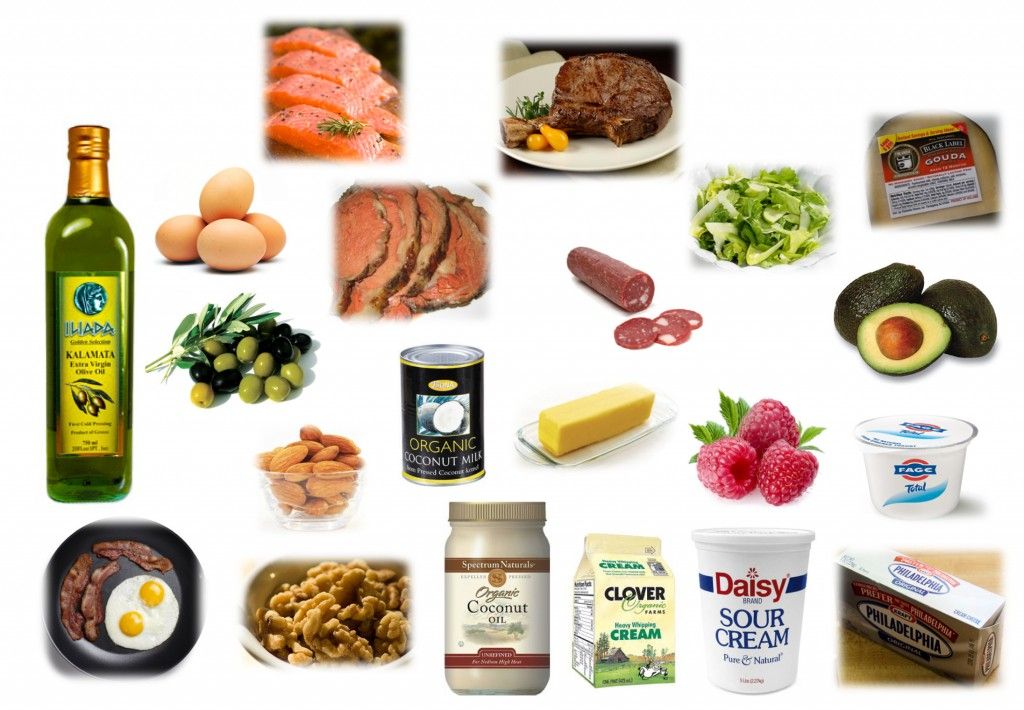 As a rule, all these phenomena are temporary, when the diet is adjusted, they disappear. According to some reports, only in 8.5% of cases the diet has to be canceled due to side effects.4
As a rule, all these phenomena are temporary, when the diet is adjusted, they disappear. According to some reports, only in 8.5% of cases the diet has to be canceled due to side effects.4
It should be understood that such a diet can cause discomfort, especially at first (due to hunger in the first 1-2 weeks, strict regulation of the amount of food consumed, the need to keep a food diary). That is why it is necessary that both the patient and his entire family have sufficient motivation to follow strict rules, the observance of which can help achieve good results.1 It is easier for adults to maintain a diet, but it gives better results in children.
When compiling the diet of a patient with epilepsy, the following factors are taken into account: age, weight, height, level of physical activity, body mass index and other individual characteristics of the body. The abundance of food now allows for a variety of diets, which makes it easier to follow a diet.
References:
- 1.
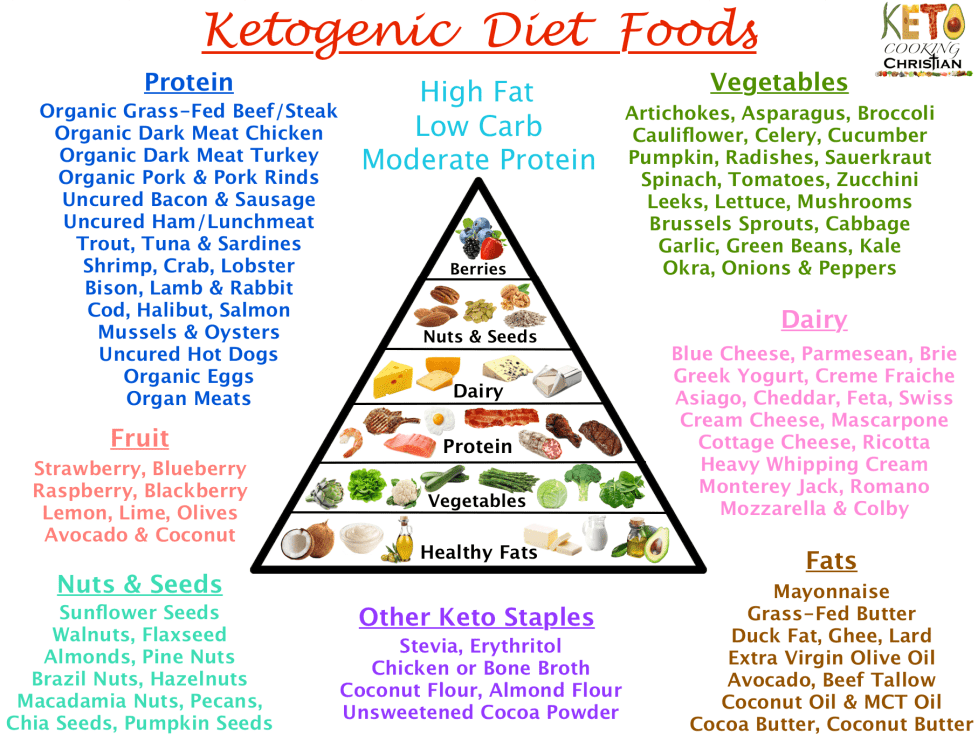 Devinsky O. Epilepsy: Patient and family guide// Demos Medical Publishing. — 3rd ed. - 2008. - p. 177.
Devinsky O. Epilepsy: Patient and family guide// Demos Medical Publishing. — 3rd ed. - 2008. - p. 177. - 2. A blog about a healthy lifestyle. Ketogenic diet. Benefit and harm: [Electronic resource]. — (https://www.live4ever.ru/ketogennaya.html). Date of last access: 04/06/2017.
- 3. Official site of Canadian Epilepsy Alliance: Ketogenic Diet: [Electronic resource]. - (http://epilepsymatters.com/information-resources/epilesy-treatments/ketogenic-diet/). Date of last access: 01/15/2016.
- 4. Neuromed. Ketogenic diet: [Electronic resource]. - (http://www.nevromed.ru/ketogennaya-dieta). Date of last access: 04/06/2017.
- 5.
 Van der Louw E, van den Hurk D, Neal E. Ketogenic diet guidelines for infants with refractory epilepsy. Eur J Paediatr Neurol. 2016 Nov;20(6):798-809
Van der Louw E, van den Hurk D, Neal E. Ketogenic diet guidelines for infants with refractory epilepsy. Eur J Paediatr Neurol. 2016 Nov;20(6):798-809 - 6. Your diet. Ketogenic diet: [Electronic resource]. — (http://your-diet.ru/?p=1013). Date of last access: 01/15/2016.
- 7. Ketogenic Diet Basics: [Electronic resource]. - (http://www.ilae.org/commission/medther/keto-basics.cfm). Date of last access: 12/28/2015.
SARU.VPA.19.09.1636
What is a ketogenic diet and how to sit on it
February 27, 2021LikbezZdorovye
Ideal for fans of fatty meat who are indifferent to bread and sweets.
Iya Zorina
Author of Lifehacker, athlete, CCM
Share
0What is the essence of the ketogenic diet
On a ketogenic diet, you eat a lot of fatty foods and exclude all starchy foods and sweets.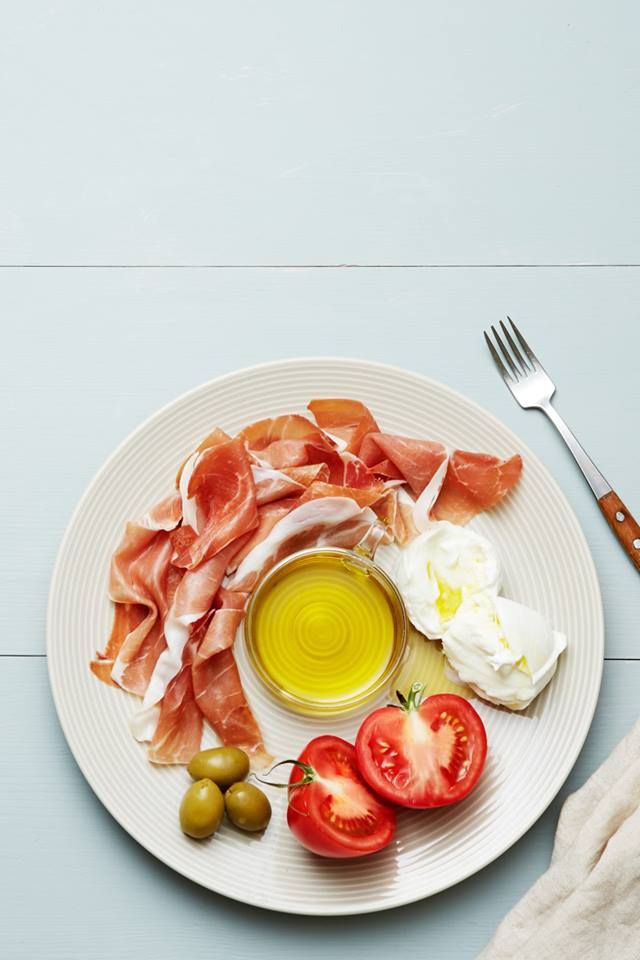 60-70% of all calories should come from fat, 20-30% from protein and only 10% from carbohydrates. Particular attention is paid to carbohydrates: you can not eat more than 50 g per day, regardless of your weight and calorie consumption.
60-70% of all calories should come from fat, 20-30% from protein and only 10% from carbohydrates. Particular attention is paid to carbohydrates: you can not eat more than 50 g per day, regardless of your weight and calorie consumption.
Fats can be obtained from vegetable oils and lard, meat and fish, cheese, sour cream, unsweetened yogurt, eggs, avocados and nuts. Most of these foods also contain enough protein to meet your daily requirement of 1.5-2 grams per kilogram of body weight. You get carbohydrates only from vegetables, unsweetened fruits and berries to get enough vitamins. No usual side dishes: porridge, pasta, potatoes. An absolute ban on sweets and alcohol.
Due to what you lose weight on a keto diet
Carbohydrates are the body's main fuel. When you consume less than 50 g of carbohydrates per day, their reserves in the body are depleted in a day, and the body begins to break down fat and use fatty acids for energy production.
However, not all organs can eat fat: the brain simply needs glucose or some kind of replacement.

To get glucose, the liver converts fatty acids into ketone bodies: acetoacetate, which is then converted to beta-hydroxybutyrate and nourishes the brain, heart, kidneys, muscles and other tissues. As a metabolic product, acetone is formed, so its concentration in the urine rises, and the breath becomes sweet.
In general, ketones are produced in the body constantly, their concentration in the blood is about 0.2-0.5 mmol/l. When their level rises to 0.5-5 mmol / l, nutritional ketosis occurs. It is not dangerous to health, unlike ketoacidosis, in which the concentration of ketone bodies rises to 10-25 mmol / l. This condition can occur in those who are dying of hunger.
Despite the fact that you do not cut calories in the diet, in a state of ketosis, the body begins to get rid of fat stores. Since the level of glucose in the blood tends to zero, the production of the hormone insulin is inhibited, and with it lipogenesis - the deposition of fat in reserve.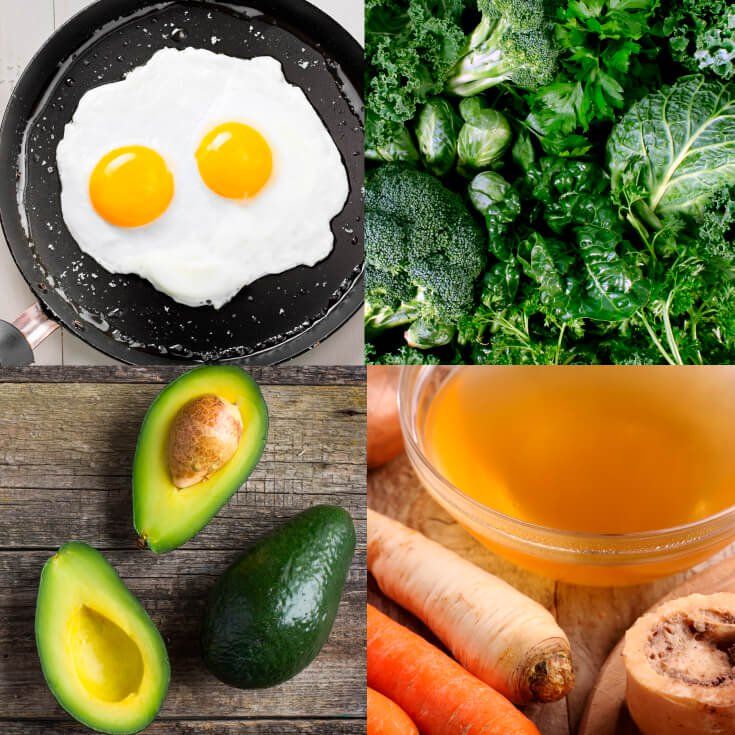
What's more, the keto diet reduces your appetite, which also helps you lose weight: you don't count calories and don't get mad when you eat.
How much can you lose on a ketogenic diet
Everything is individual here. In a review of six studies on the ketogenic diet, participants lost between 3.2 and 12 kg in six months. If you take the average of all the results in the review, you get about 6 kg in 6 months.
Who should try the keto diet
Despite the difficult first days and strict restrictions, the ketogenic diet is ideal for some people. Worth a try:
- For those who love meat. If you cannot live without it and fatty foods, and are indifferent to sweets and bread, the keto diet is your option.
- Those who want to lose weight without losing muscle mass. The keto diet helps to lose fat, including visceral fat, while maintaining lean muscle mass. Moreover, the diet does not affect strength performance, so it is quite suitable for strength athletes and bodybuilders.
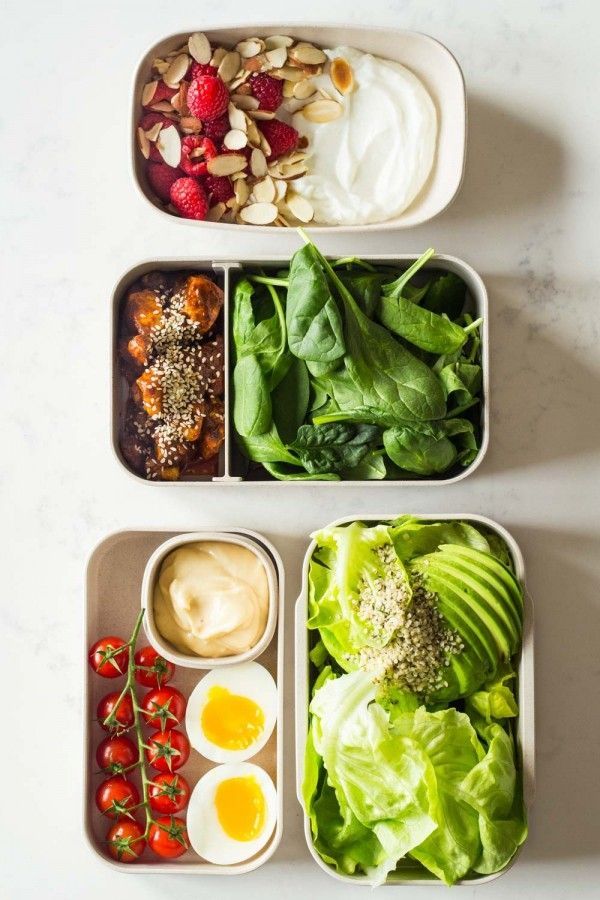 Although you can't build muscle.
Although you can't build muscle. - People with type 1 and type 2 diabetes. Due to disruptions in the production of insulin, diabetics are forced to take this hormone in order to avoid sudden spikes in blood sugar. The keto diet greatly reduces its level. But before switching to a keto diet, you should consult with your doctor.
- Those who want to keep their brain healthy. The keto diet has a positive effect on mental and emotional health, protects the brain from neurodegenerative diseases, and helps with migraines and epilepsy.
- Those who want to reduce the risk of atherosclerosis. The diet reduces the amount of "bad" cholesterol and fats in the blood and increases the percentage of "good".
- For those who are afraid of cancer. The keto diet limits reactive oxygen species and reduces inflammation, a factor often associated with cancer.
- Runners and triathletes. If you are a cyclic endurance athlete, the keto diet can improve your performance.

Who should not be on a ketogenic diet
This diet is contraindicated:
- People with kidney and liver disease, disorders of fatty acid oxidation.
- Team sports, crossfitters, middle distance runners. If your activities involve long stays in anaerobic mode, the keto diet will lower your performance.
- People with fragile bones. Possible side effects of the diet include changes in bone mineral composition, which can lead to an increased risk of fractures.
Is it difficult to follow a ketogenic diet
The keto diet is not the easiest diet, especially at first. When your body begins to experience a lack of glucose, symptoms of the keto flu may appear: nausea, vomiting, headaches, fatigue, dizziness, insomnia, and constipation. They last from 2-3 days to several weeks.
Do not consume more carbohydrates to alleviate the condition.
If you break loose, the body will get the desired glucose, you will come out of ketosis and you will have to repeat everything from the beginning.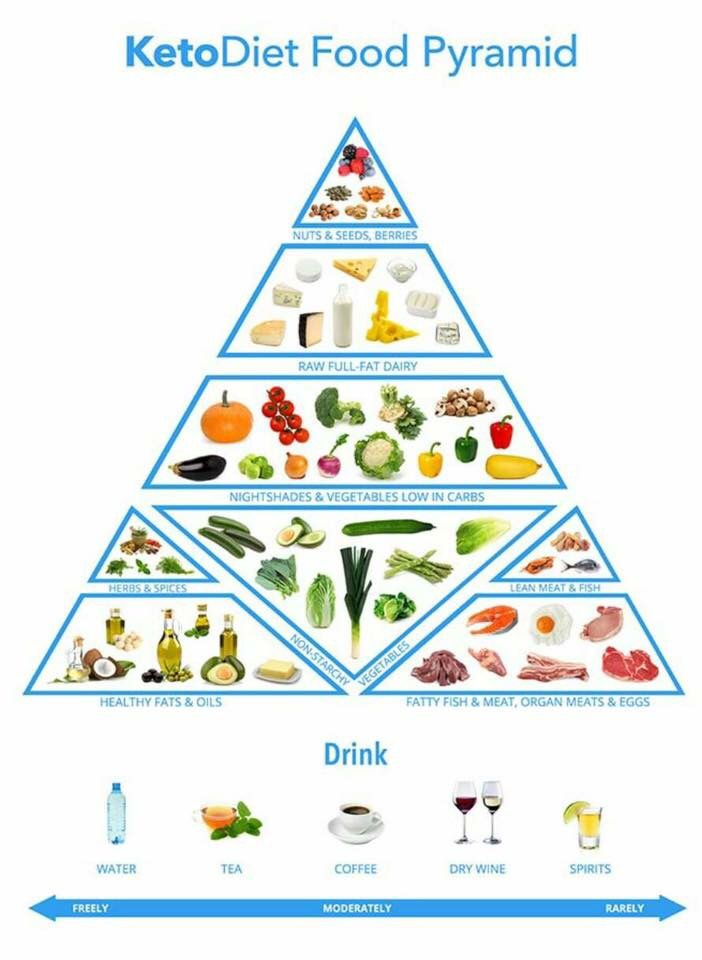 This is the difficulty of maintaining a diet. On the other hand, this is also its advantage: you know that after the breakdown you will again have to go through an unpleasant adaptation, so you will hold on.
This is the difficulty of maintaining a diet. On the other hand, this is also its advantage: you know that after the breakdown you will again have to go through an unpleasant adaptation, so you will hold on.
How to go on a ketogenic diet
Personal trainer and nutritionist John Fawkes suggests dividing the diet into several phases and following certain rules.
1. Preadaptation (2-4 weeks)
Introduce 40-80g of coconut oil into your diet to provide your body with medium chain triglycerides. They are quickly absorbed, are not deposited in fat and are processed in the liver into ketone bodies. Instead of oil, you can consume a dietary supplement with ketones in powder form.
Reduce carbohydrate intake to 100 g per day. This way you will not enter ketosis, but train yourself to eat less carbohydrate-rich foods.
2. Getting into ketosis (4 days)
Day 1. Skip breakfast and lunch, fast all day until evening. Dinner should be no more than 200–300 kcal, 10–15 g of protein and 15–30 g of fat.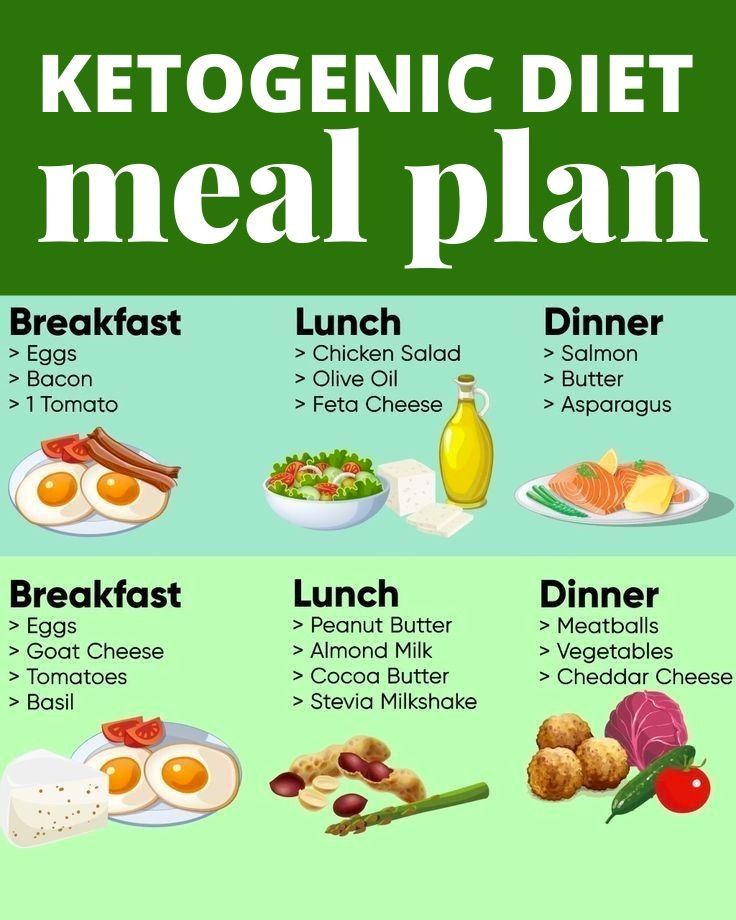 No carbs.
No carbs.
Day 2. Eat the same portion for breakfast and lunch, for dinner - ⅔ of your usual portion of food. No carbs.
Day 3. For breakfast and lunch, you can eat ⅔ of the usual portion of food, make dinner complete. Still no carbs.
Day 4. Eat your regular portions, you can include non-starchy vegetables and unsweetened fruits.
During this phase, training is best replaced by long walks. This will burn glucose and help you get into ketosis faster. If on a walk it seems to you that your legs have run out of strength, this is a good sign: glycogen stores are almost exhausted.
Continue coconut oil or ketone powder, add vitamins and electrolyte drink.
3. Keto adaptation (2-4 weeks)
It will take several weeks for you to fully adapt to the diet. At this time, you need to maintain carbohydrates within 30 g per day - if you are exercising, and 20 g - if not. Please note that at first the energy level will be slightly lower. This is normal and will gradually pass. At this stage, it is no longer necessary to take ketone powder.
At this stage, it is no longer necessary to take ketone powder.
How long to stay on a keto diet and how to get off so that the weight does not return
A ketogenic diet can last from 3-4 weeks to a year. It makes no sense to stick to a diet for less than three weeks, because during this time your body will go through keto adaptation and you will only begin to receive all the benefits of such a diet.
As for longer than a year, there is not enough scientific evidence to judge this, but eating like this all your life is a bad idea. First, long-term ketosis increases the risk of liver steatosis, hypoproteinemia, kidney stones, and vitamin and mineral deficiencies. Secondly, the rejection of one of the macronutrients does not have the best effect on the lifespan. An analysis of data from more than 15,000 people showed that both excess and lack of carbohydrates in the long term increases the risk of death. The longest lived people whose diet consisted of carbohydrates by 50-55%.




